Related Research Articles

In mathematics, a fractal is a geometric shape containing detailed structure at arbitrarily small scales, usually having a fractal dimension strictly exceeding the topological dimension. Many fractals appear similar at various scales, as illustrated in successive magnifications of the Mandelbrot set. This exhibition of similar patterns at increasingly smaller scales is called self-similarity, also known as expanding symmetry or unfolding symmetry; if this replication is exactly the same at every scale, as in the Menger sponge, the shape is called affine self-similar. Fractal geometry lies within the mathematical branch of measure theory.

In statistical physics and mathematics, percolation theory describes the behavior of a network when nodes or links are added. This is a geometric type of phase transition, since at a critical fraction of addition the network of small, disconnected clusters merge into significantly larger connected, so-called spanning clusters. The applications of percolation theory to materials science and in many other disciplines are discussed here and in the articles Network theory and Percolation.

In physics, chemistry, and materials science, percolation refers to the movement and filtering of fluids through porous materials. It is described by Darcy's law. Broader applications have since been developed that cover connectivity of many systems modeled as lattices or graphs, analogous to connectivity of lattice components in the filtration problem that modulates capacity for percolation.
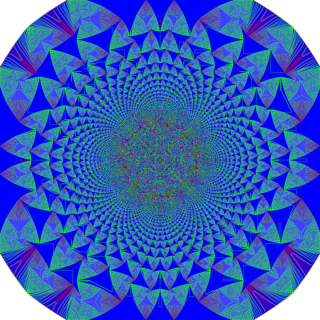
Self-organized criticality (SOC) is a property of dynamical systems that have a critical point as an attractor. Their macroscopic behavior thus displays the spatial or temporal scale-invariance characteristic of the critical point of a phase transition, but without the need to tune control parameters to a precise value, because the system, effectively, tunes itself as it evolves towards criticality.
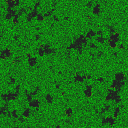
In applied mathematics, a forest-fire model is any of a number of dynamical systems displaying self-organized criticality. Note, however, that according to Pruessner et al. the forest-fire model does not behave critically on very large, i.e. physically relevant scales. Early versions go back to Henley (1989) and Drossel and Schwabl (1992). The model is defined as a cellular automaton on a grid with Ld cells. L is the sidelength of the grid and d is its dimension. A cell can be empty, occupied by a tree, or burning. The model of Drossel and Schwabl (1992) is defined by four rules which are executed simultaneously:
- A burning cell turns into an empty cell
- A tree will burn if at least one neighbor is burning
- A tree ignites with probability f even if no neighbor is burning
- An empty space fills with a tree with probability p

In statistical physics, the Smoluchowski coagulation equation is a population balance equation introduced by Marian Smoluchowski in a seminal 1916 publication, describing the time evolution of the number density of particles as they coagulate to size x at time t.
In statistical physics, directed percolation (DP) refers to a class of models that mimic filtering of fluids through porous materials along a given direction, due to the effect of gravity. Varying the microscopic connectivity of the pores, these models display a phase transition from a macroscopically permeable (percolating) to an impermeable (non-percolating) state. Directed percolation is also used as a simple model for epidemic spreading with a transition between survival and extinction of the disease depending on the infection rate.

Fractal analysis is useful in the study of complex networks, present in both natural and artificial systems such as computer systems, brain and social networks, allowing further development of the field in network science.
In mathematics, a multiplicative cascade is a fractal/multifractal distribution of points produced via an iterative and multiplicative random process.

Vladimir (Vlad) M. Shalaev is a Distinguished Professor of Electrical and Computer Engineering and Scientific Director for Nanophotonics at Birck Nanotechnology Center, Purdue University.

Shlomo Havlin is a professor in the Department of Physics at Bar-Ilan University, Ramat-Gan, Israel. He served as President of the Israel Physical Society (1996–1999), Dean of Faculty of Exact Sciences (1999–2001), chairman, Department of Physics (1984–1988).
The clique percolation method is a popular approach for analyzing the overlapping community structure of networks. The term network community has no widely accepted unique definition and it is usually defined as a group of nodes that are more densely connected to each other than to other nodes in the network. There are numerous alternative methods for detecting communities in networks, for example, the Girvan–Newman algorithm, hierarchical clustering and modularity maximization.
In the context of the physical and mathematical theory of percolation, a percolation transition is characterized by a set of universal critical exponents, which describe the fractal properties of the percolating medium at large scales and sufficiently close to the transition. The exponents are universal in the sense that they only depend on the type of percolation model and on the space dimension. They are expected to not depend on microscopic details such as the lattice structure, or whether site or bond percolation is considered. This article deals with the critical exponents of random percolation.
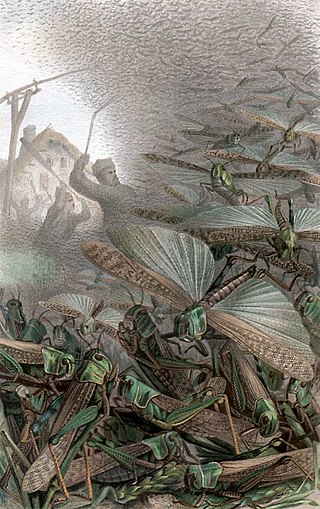
Self-propelled particles (SPP), also referred to as self-driven particles, are terms used by physicists to describe autonomous agents, which convert energy from the environment into directed or persistent random walk. Natural systems which have inspired the study and design of these particles include walking, swimming or flying animals. Other biological systems include bacteria, cells, algae and other micro-organisms. Generally, self-propelled particles often refer to artificial systems such as robots or specifically designed particles such as swimming Janus colloids, bimetallic nanorods, nanomotors and walking grains. In the case of directed propulsion, which is driven by a chemical gradient, this is referred to as chemotaxis, observed in biological systems, e.g. bacteria quorum sensing and ant pheromone detection, and in synthetic systems, e.g. enzyme molecule chemotaxis and enzyme powered hard and soft particles.
Amit Chakrabarti is the former William and Joan Porter Chair in Physics at Kansas State University. He currently serves as the dean of the college of arts and sciences at Kansas State University.
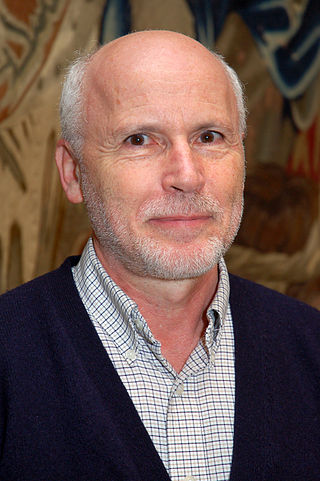
Tamás Vicsek is a Hungarian scientist with research interests in numerical studies of dense liquids, percolation theory, Monte Carlo simulation of cluster models, aggregation phenomena, fractal growth, pattern formation, collective phenomena in biological systems, molecular motors, cell locomotion in vitro. He held the position of professor of physics at the Eötvös Loránd University, Budapest, Hungary, and was visiting scientists in various academia.
Collective motion is defined as the spontaneous emergence of ordered movement in a system consisting of many self-propelled agents. It can be observed in everyday life, for example in flocks of birds, schools of fish, herds of animals and also in crowds and car traffic. It also appears at the microscopic level: in colonies of bacteria, motility assays and artificial self-propelled particles. The scientific community is trying to understand the universality of this phenomenon. In particular it is intensively investigated in statistical physics and in the field of active matter. Experiments on animals, biological and synthesized self-propelled particles, simulations and theories are conducted in parallel to study these phenomena. One of the most famous models that describes such behavior is the Vicsek model introduced by Tamás Vicsek et al. in 1995.
Dynamic scaling is a litmus test that shows whether an evolving system exhibits self-similarity. In general a function is said to exhibit dynamic scaling if it satisfies:
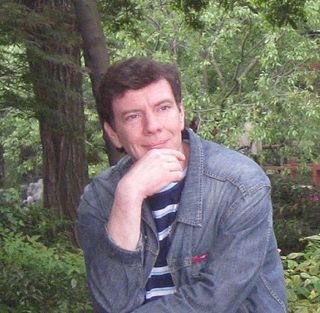
Vladimir G. Dubrovskii is the head of Laboratory of physics of nanostructures at St. Petersburg Academic University, a leading research scientist at Ioffe Institute, and a professor at St. Petersburg State University and ITMO University.
References
- ↑ "APS Fellow Archive". American Physical Society. (search on year=1990 and institution=Emory University)
- Physics Computing News [ permanent dead link ], 1994. "Information about the Candidates".